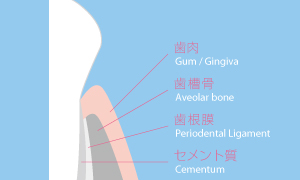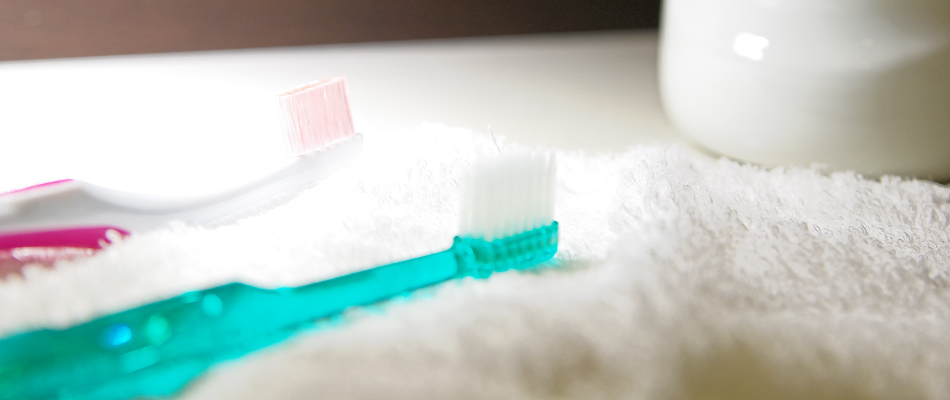Human Periodontium
Periodontium are the tissues that surround and support the teeth themselves. Periodontium consist of 4 tissues Alveolar bone, Cementum, Gums and Periodontal ligament. The disease that those tissues are destroyed by inflammation is called Periodontitis.
Alveolar bone is in the boundaries between the teeth and the jaw and is the foundation supporting the teeth. The leading edge of alveolar bone has the shape that is fit for the roots. Comparing tooth to a bolt, this bone plays a role similar to the bolt holes. The alveolar bone between the root and root has nerves and blood vessels.
Periodontal ligament(PDL) is a connective tissue fibers that attach the cementum of a tooth to the alveolar bone. PDL mainly consists of collagen fibers and has nerves and blood vessels. Through the blood vessels of PDL, nutrients are carried to the cementum.
The cementum of periodontium is in the boundaries between the root and the PDL. With PDL, the cementum attach a tooth to the jaw. Human biting pressure is in men on average 60kg, in women 40kg and in athletes more than 100kg. Because by the cementum and the PDL teeth are firmly fixed to the jaw, our teeth can afford to such a high pressure.
Gum is mucous membrane connecting teeth and the other periodontium and consists of attached gingiva, interdental gingiva and marginal gingiva. Attached gingiva, by the gingival fibers, close to the cementum or the alveolar bone. The gum that is between the teeth is called interdental gingiva. Marginal gingiva is the gum surrounding the tooth around.
Alveolar bone is in the boundaries between the teeth and the jaw and is the foundation supporting the teeth. The leading edge of alveolar bone has the shape that is fit for the roots. Comparing tooth to a bolt, this bone plays a role similar to the bolt holes. The alveolar bone between the root and root has nerves and blood vessels.
Periodontal ligament(PDL) is a connective tissue fibers that attach the cementum of a tooth to the alveolar bone. PDL mainly consists of collagen fibers and has nerves and blood vessels. Through the blood vessels of PDL, nutrients are carried to the cementum.
The cementum of periodontium is in the boundaries between the root and the PDL. With PDL, the cementum attach a tooth to the jaw. Human biting pressure is in men on average 60kg, in women 40kg and in athletes more than 100kg. Because by the cementum and the PDL teeth are firmly fixed to the jaw, our teeth can afford to such a high pressure.
Gum is mucous membrane connecting teeth and the other periodontium and consists of attached gingiva, interdental gingiva and marginal gingiva. Attached gingiva, by the gingival fibers, close to the cementum or the alveolar bone. The gum that is between the teeth is called interdental gingiva. Marginal gingiva is the gum surrounding the tooth around.

- Dental Caries and Cleaning
- Teeth
- Dental Caries
- Causes
- Prevention
- Periodontitis and Cleaning
- Periodontium
- Periodontitis
- Causes
- Prevention
- Methods of Tooth Cleaning
- Brushing and Flossing
- Cleaning Timing
- Preparation
- Brushing Methods
- 4 Techniques
- Flossing Methods







